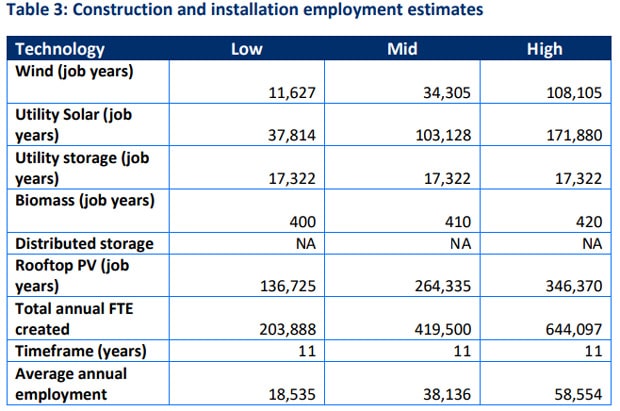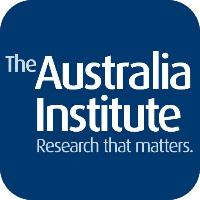Estimates from the Australia Institute show a rapid renewable energy transition in Australia could generate 58,554 new jobs annually over eleven years.
The ‘Will-o’-the-ISP’ report is based on the Australian Energy Market Operator’s Integrated System Plan (ISP).
The ISP is a comprehensive infrastructure development plan for Australia’s energy system. It projects how much renewable energy will enter the market between now and 2030.
The ISP includes a ‘fast’ scenario that sees 42,895 MW of new renewable energy capacity built by 2029-30. This will result in 53 per cent of generation capacity from renewables.
Rapid transition to renewables promotes jobs
The Australia Institute estimate is based on four studies on the employment benefits of renewable energy development.

Applied to the ISP’s “fast” renewable uptake scenario, the estimate is 58,554 full-time jobs each year over eleven years.
The report says “surprisingly little attention” is given to the potential employment benefits of a rapid transition to renewable energy.

“This is even more surprising as many of the benefits would be felt in regional areas where employment opportunities are often a social, political and economic priority,” the report adds.
“As more renewable energy develops, researchers, decision makers and the public will hopefully gain a better understanding of these benefits.”
The report found most renewable energy jobs occur during construction and installation. However, a considerable workforce then operates and maintains the facilities.
New coal stations cannot compete with renewable energy
The Australian Energy Market Operator (AEMO) released its ISP in July 2018. The plan shows investment in transmission rather than generation could save the government up to $2 billion.
It states that increased investment in an interconnected grid would integrate renewable energy sources like solar PV, and support efficient competitive alternatives for consumers.
In addition, AEMO said solar panel systems and battery storage could save the Federal Government $4 billion.
AEMO Managing Director Audrey Zibelman told Radio 2GB that coal plants can’t compete with renewables in terms of building new energy generators.
She said while existing coal-fired stations can compete on cost, new ones would not.
The former was a resource with high capital and operating costs, the latter a resource with “low operating costs because fuel is free”.
AEMO believes solar energy systems and battery storage are disrupting the market. The challenge now is to ensure reliability and security as Australia makes the transition from fossil fuels to renewable energy.













































